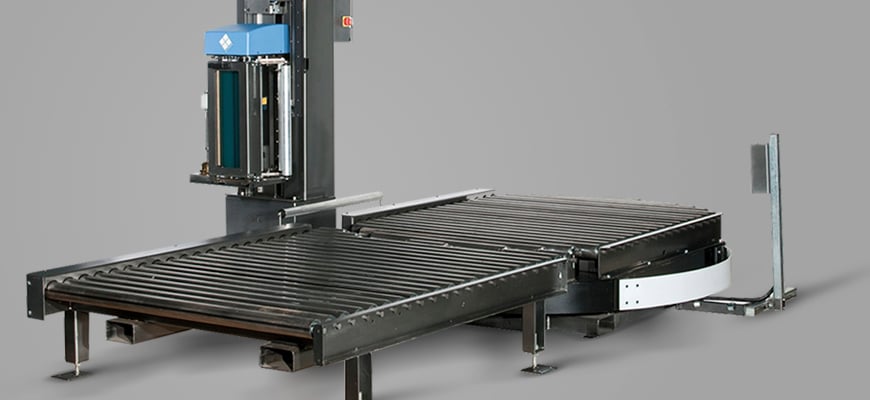
Creating your own Rocket Industrial personal account has many benefits:

Are you or your team tired of hand wrapping pallets and dealing with wasted material and time? A stretch wrap machine doesn't just increase the number of pallets you can wrap in an hour, it also reduces stretch film costs, damage related costs, and gives time back to employees to work on other tasks. In this buying guide, we will explore the key factors to consider when purchasing a pallet wrapper to help you make an informed decision.
The cost of a stretch wrapper can be easily justified even if you are wrapping as little as 10 loads per day. Hand wrapping is time consuming and can lead to a lot of stretch film waste plus inconsistencies that lead to damage. Most stretch wrappers can stretch the film up to 250% compared to less than 40% with hand wrapping resulting in less material usage and better load containment.
Watch our video below to see a comparison of our lab manager hand wrapping vs using a stretch wrap machine to wrap a load, and then putting the load through simulated lab tests.
Pallet wrappers, also known as stretch wrappers, help secure goods to pallets, ensuring safe and efficient transportation and storage. These machines come in different operation types with different machine styles and features. Knowing which operation type and style you need to match your labor and product needs is important to choosing the right pallet wrapper. Look for features like variable turntable speed, adjustable tension control, and pre-stretch capabilities to further enhance efficiency.
Manual Pallet Wrappers
These are ideal for very small-scale operations where the volume of pallets to wrap is low. Manual pallet wrappers require an operator to wrap the load by hand using the stand to stabilize the load and apply tension. This is a step up from fully manual hand wrapping, but can still be very time-consuming.
Semi-Automatic Pallet Wrappers
These machines partially automate the wrapping process. They require some operator intervention, such as attaching the film and starting the wrapping cycle. These wrappers are available in turntable, orbital, portable, and rotary styles.
Automatic Pallet Wrappers
Designed for high-volume operations, automatic pallet wrappers require minimal worker involvement. They can wrap a higher number of pallets per hour with precision and consistency. These wrappers are available in turntable, conveyorized, overhead, and horizontal styles.
Questions to Answer
To determine which machine is best matched to handle your stretch wrapping needs, you need to be able to answer these key questions when discussing with a supplier:
Determine Your Budget
While it's essential to find a pallet wrapper that meets your operational needs, it's equally crucial to stay within your budget. Consider not only the upfront purchase cost but also the long-term costs associated with maintenance and film consumption. A more expensive, efficient machine may result in lower operational costs over time. The average cost of a standard semi-automatic stretch wrapper ranges from $6,000 to $12,000, with the higher range typically including an extended mast or built-in scale.
Find the Right Supplier
Don't just shop based on price alone though. Buying from a reputable and knowledgeable supplier that can answer your questions and provide additional support after the sale is extremely important. Like any machine, you may require installation help for initial setup, need to purchase stretch wrapper parts to replace worn-out ones, or have a tech come to your facility for a repair. Finding a supplier who can provide these services along with a product recommendation is a huge benefit.
Stretch Film Selection
Selecting the right stretch film is as important as choosing the pallet wrapper itself since efficient film usage is a key consideration when selecting a new machine. Consider the type of goods you are wrapping and the environment in which they will be stored or transported. The film thickness also matters as it affects the load's stability and protection levels.
Machine Durability & Maintenance
Investing in a durable and reliable pallet wrapper will save you money in the long run. Look for machines made from high-quality materials and with a brand reputation for longevity. Regular maintenance is also essential to keep your pallet wrapper in good working condition. Also consider looking at what the machine's standard warranty offers, plus any extended offers.
To ensure you make the best pallet wrapper choice for your business, contact an equipment specialist at Rocket Industrial. We can provide personalized guidance and help you find the ideal stretch wrapper to fit your needs. Our years of industry experience, service support after the sale, and special package discounts make us a leader in pallet wrapping machines.